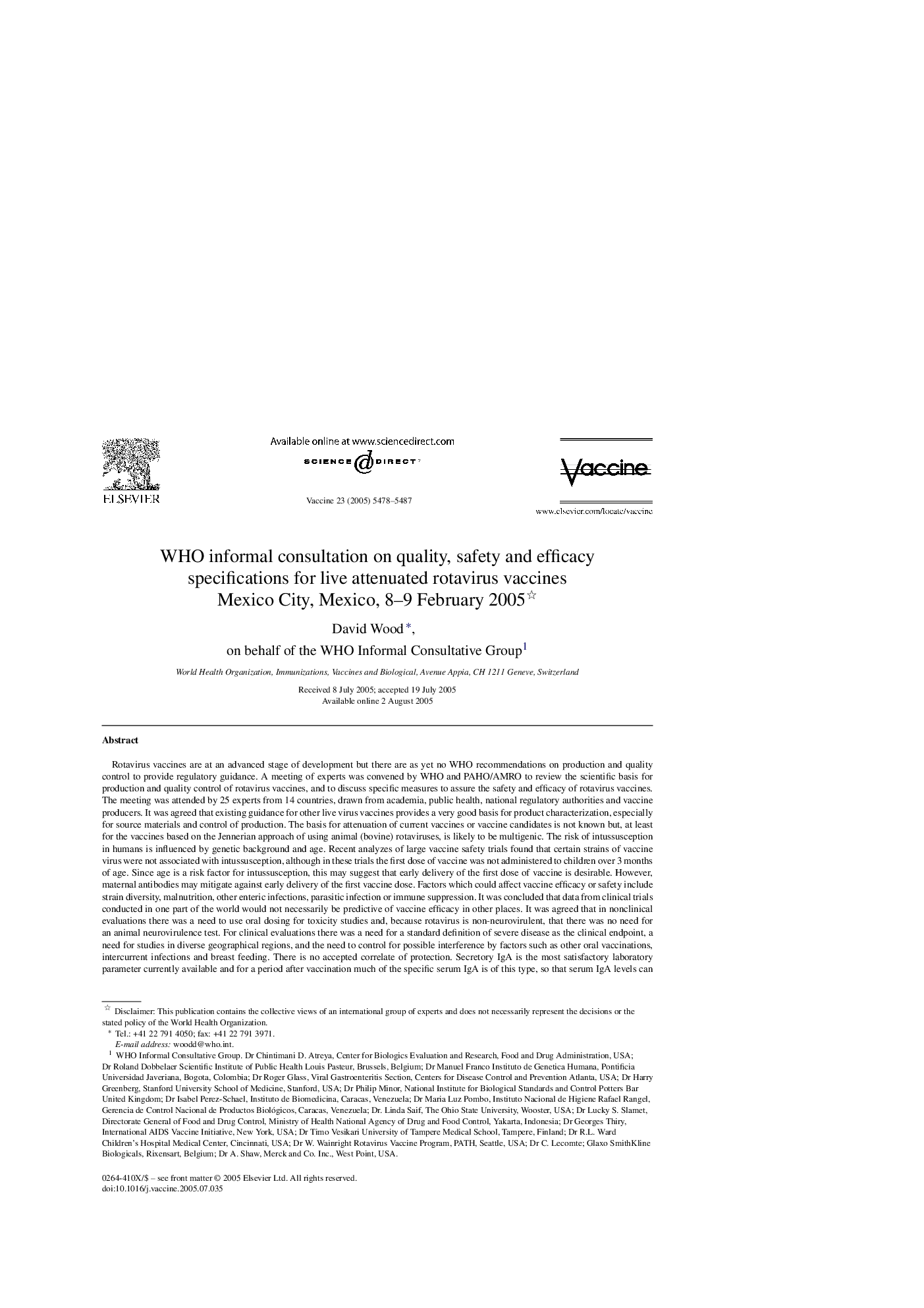| کد مقاله | کد نشریه | سال انتشار | مقاله انگلیسی | نسخه تمام متن |
|---|---|---|---|---|
| 2410148 | 1551796 | 2005 | 10 صفحه PDF | دانلود رایگان |

Rotavirus vaccines are at an advanced stage of development but there are as yet no WHO recommendations on production and quality control to provide regulatory guidance. A meeting of experts was convened by WHO and PAHO/AMRO to review the scientific basis for production and quality control of rotavirus vaccines, and to discuss specific measures to assure the safety and efficacy of rotavirus vaccines. The meeting was attended by 25 experts from 14 countries, drawn from academia, public health, national regulatory authorities and vaccine producers. It was agreed that existing guidance for other live virus vaccines provides a very good basis for product characterization, especially for source materials and control of production. The basis for attenuation of current vaccines or vaccine candidates is not known but, at least for the vaccines based on the Jennerian approach of using animal (bovine) rotaviruses, is likely to be multigenic. The risk of intussusception in humans is influenced by genetic background and age. Recent analyzes of large vaccine safety trials found that certain strains of vaccine virus were not associated with intussusception, although in these trials the first dose of vaccine was not administered to children over 3 months of age. Since age is a risk factor for intussusception, this may suggest that early delivery of the first dose of vaccine is desirable. However, maternal antibodies may mitigate against early delivery of the first vaccine dose. Factors which could affect vaccine efficacy or safety include strain diversity, malnutrition, other enteric infections, parasitic infection or immune suppression. It was concluded that data from clinical trials conducted in one part of the world would not necessarily be predictive of vaccine efficacy in other places. It was agreed that in nonclinical evaluations there was a need to use oral dosing for toxicity studies and, because rotavirus is non-neurovirulent, that there was no need for an animal neurovirulence test. For clinical evaluations there was a need for a standard definition of severe disease as the clinical endpoint, a need for studies in diverse geographical regions, and the need to control for possible interference by factors such as other oral vaccinations, intercurrent infections and breast feeding. There is no accepted correlate of protection. Secretory IgA is the most satisfactory laboratory parameter currently available and for a period after vaccination much of the specific serum IgA is of this type, so that serum IgA levels can act as measure of seroconversion. The need for standardization of the potency assay for release of vaccine was identified, as was a need to develop guidance on standardized approaches to post-marketing surveillance for rotavirus vaccines.
Journal: Vaccine - Volume 23, Issues 48–49, 1 December 2005, Pages 5478–5487